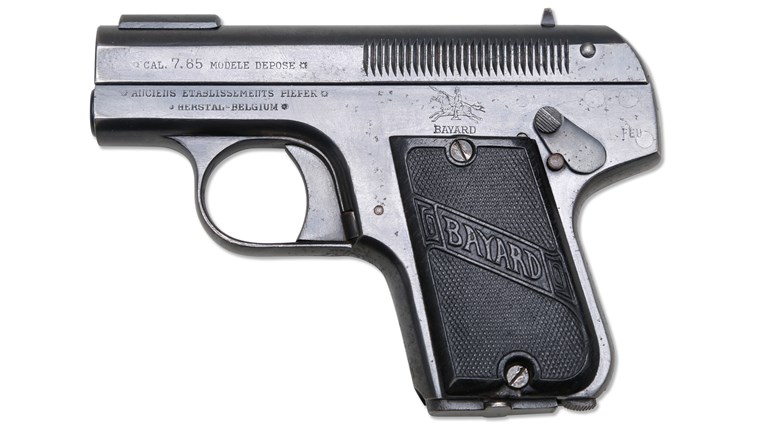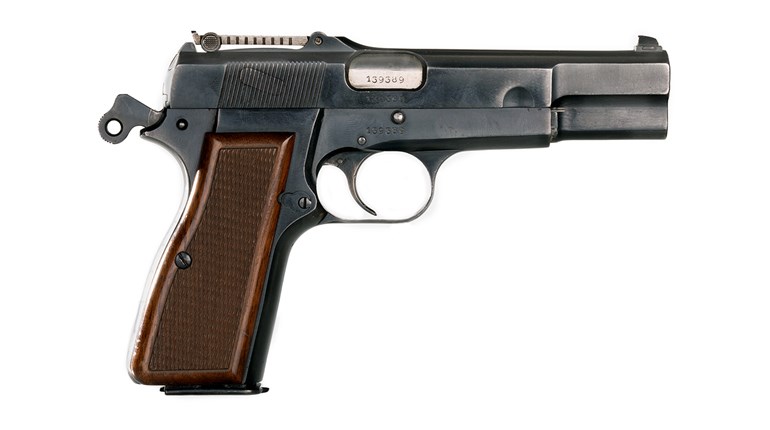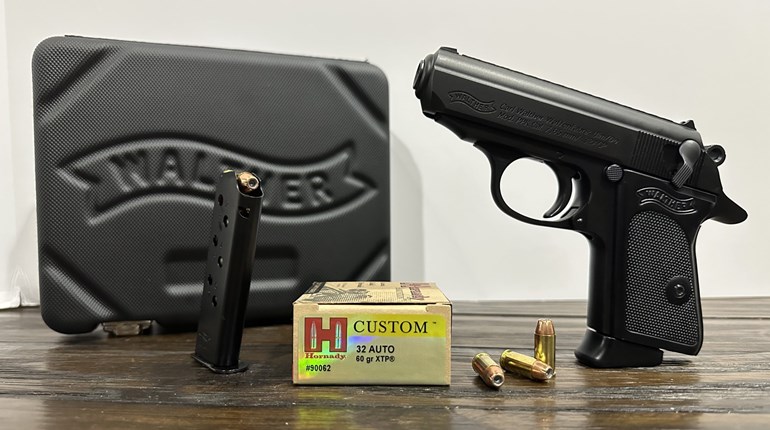
What do the Austro-Hungarian Archduke Franz Ferdinand, former French President Paul Doumer and former Louisiana Senator Huey P. Long have in common? The more obvious answer is simple: Assassination—all three men were victims of it. Archduke Ferdinand was killed in Sarajevo in June 1914, President Doumer was killed in Paris in May 1932 and Senator Long was killed in Baton Rouge in September 1935. The less obvious answer though is that they were each assassinated with the same-model firearm: The Fabrique Nationale Model 1910 pistol.

The legendary gun designer John Moses Browning created the world’s first commercially successful, semi-automatic handgun just before the turn of the 20th century. Manufactured in Herstal, Belgium near Liège by Fabrique Nationale d’Armes de Guerre as the Model 1900, it introduced the world to the magazine-fed, slide-operated sidearm and in many ways set a standard that continues to define the modern service pistol today. Although the Model 1900 was compact, reliable and affordable, to Browning there was still room for improvement and he therefore continued to work toward a more perfect design. Three years later, Colt began producing his next self-loading pistol: The Model 1903 in .32 ACP (7.65 mm), which was also commonly referred to as the “pocket hammerless” despite the fact that it used an internal hammer. That pistol was eventually also offered in Browning’s new, more powerful .380 ACP cartridge as the Model 1908.
With successful pistols in production in two calibers in Europe and North America, Browning then moved on to the next evolution of his unique engineering vision. By 1908, he had worked up an advanced, new design that utilized the Model 1900’s trigger and further streamlined the Model 1903’s profile by wrapping the mainspring around the gun’s barrel. This innovative feature, first introduced by Browning, would eventually be incorporated in several other designs like the PPK and Makarov. But, the low bore axis didn’t just make the new model more compact than the Model 1903, it also made recoil more manageable, which in turn yielded improved accuracy. When the gun went into production at FN in 1912, it was a striker-fired, blowback-operated semi-automatic with a grip safety, a manual safety and a magazine safety. It was offered in .32 ACP with a seven-round magazine and .380 ACP with six-round capacity. A heel release secured the magazine in the grip and the entire package weighed just 1.3 pounds.

Although at first referred to simply as the “new model” Browning, we know it today as the FN Model 1910. It offered several advantages over existing self-loading designs that made it not only ideal as a civilian concealed-carry handgun, but also an effective military and police-service sidearm. During the era of the World Wars, it was used by Belgium, the Netherlands, France and Finland. Eventually even Peru and Venezuela procured it during the postwar time period. During the 1930s, Japanese soldiers, sailors and airmen began carrying the .32 ACP Model 1910 in large numbers, but not as an issue sidearm. Thanks to a network of distributors and foreign sales agents, qualified Japanese officers were able to privately purchase it at “gun counters” and in officer’s union stores for reasonable prices.
What happened to FN Model 1910 serial number 409714 narrates the story quite nicely: FN sold it to a distributing firm, Schroeder Brothers of Liège, on July 14, 1937 and Schroeder Brothers then sold it to a sales agent named Mr. Matsuhara of Osaka a few weeks later. In November of that year, an Army Medical Officer named Tetsuo Aso purchased 409714 from the Fukuoka Gun Shop and began carrying it to supplement the firepower of the Type 26 revolver the Army issued him. It is because of the Model 1910’s widespread use as a private-purchase sidearm in the Japanese military that relic examples can be found on Pacific islands like Peleliu and Guadalcanal today.
Even as more advanced designs came into use in Europe and North America after World War II, the FN Model 1910 remained in production. In 1955, Browning USA began importing the pistol in both chamberings and continued to do so until the Gun Control Act of 1968 forced FN to make some changes. A version with a longer barrel, adjustable target sights and finger-rest grips was introduced as the Model 1910/71, but it failed to make the splash that its forerunner had. It lacked the compact size and smooth lines that made Browning’s original so appealing. When production ended at FN in 1983, over 700,000 Model 1910-type pistols had been made in a production run that extended 57 years beyond the end of its designer’s life. That is a powerful testimony to the singular engineering genius of
John Moses Browning.




































